I have the follow image:
What I want to do is to keep all red figures.
Using this code..
import cv2
import numpy as np
def callback(x):
pass
cap = cv2.VideoCapture(0)
cv2.namedWindow('image')
ilowH = 0
ihighH = 179
ilowS = 0
ihighS = 255
ilowV = 0
ihighV = 255
# create trackbars for color change
cv2.createTrackbar('lowH', 'image', ilowH, 179, callback)
cv2.createTrackbar('highH', 'image', ihighH, 179, callback)
cv2.createTrackbar('lowS', 'image', ilowS, 255, callback)
cv2.createTrackbar('highS', 'image', ihighS, 255, callback)
cv2.createTrackbar('lowV', 'image', ilowV, 255, callback)
cv2.createTrackbar('highV', 'image', ihighV, 255, callback)
while True:
# grab the frame
frame = cv2.imread('color_test.png')
# get trackbar positions
ilowH = cv2.getTrackbarPos('lowH', 'image')
ihighH = cv2.getTrackbarPos('highH', 'image')
ilowS = cv2.getTrackbarPos('lowS', 'image')
ihighS = cv2.getTrackbarPos('highS', 'image')
ilowV = cv2.getTrackbarPos('lowV', 'image')
ihighV = cv2.getTrackbarPos('highV', 'image')
hsv = cv2.cvtColor(frame, cv2.COLOR_BGR2HSV)
lower_hsv = np.array([ilowH, ilowS, ilowV])
higher_hsv = np.array([ihighH, ihighS, ihighV])
mask = cv2.inRange(hsv, lower_hsv, higher_hsv)
frame = cv2.bitwise_and(frame, frame, mask=mask)
# show thresholded image
cv2.imshow('image', frame)
k = cv2.waitKey(1) & 0xFF # large wait time to remove freezing
if k == 113 or k == 27:
break
cv2.destroyAllWindows()
cap.release()
... max I can obtain is this:
How can I get rid of yellow colour and keep the 3 red figures ? Is HSL a good alternative to use in cases like this ? Keep in mind that the center red it's not the same as the other 2; one is full red (255, 0, 0) the other are less (237, 28, 36) RGB.






